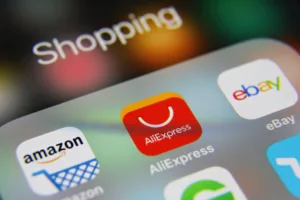Put your money where your morals are: why acting with integrity is more than a marketing thing
By Sarah Marsh, Marketing Manager, Adimo
These articles have been written by the latest cohort of the Practice Makes UnPerfect programme – a course that helps women find and finesse their public voices
Look back through ad land’s history and every year you’ll find examples of where brands got it spectacularly wrong. I’m not talking about the John Lewis Christmas ad that everyone thought was shit, I mean truly terrible marketing decisions that lead to trending on Twitter for the wrong reasons.
From supermarkets pumping ad spend into right-wing news channels, to personal care brands with racist undertones in their creative, the more you look the more the list grows. But why?
Not every brand that messes up is run by far-right extremists, chauvinists and racist thugs who love the Daily Fail. In fact, I’m willing to bet that 9 times out of 10 these slip-ups are a symptom of internal problems – value misalignment and a lack of transparency between teams and agencies. When you’re so focused on ROI and the bottom line it can be hard to see the bigger picture, right?
Sure you could (and should) fire the bad apples, but these instances will still occur when teams are unfocused and working to different ideas of where brands should / shouldn’t be having a voice. So to that end, I have an idea. I’m calling it the Moral Manifesto.
The Moral Manifesto – I believe – should become a standard marketing practice that every brand follows, as integral as tone of voice, branding guidelines and company values; and underpins key business decisions beyond the marketing plan. So what would it even look like?
Taking a stance
The starting point of any Moral Manifesto is outlining the causes and social issues that a brand has a position on. This is more than just having an opinion, it’s the causes a brand is prepared to champion, come out in support of when faced with possible backlash, and crucially, commit to trying to improve, even when the cameras are off and the world isn’t watching.
It may sound like a daunting prospect. Having a voice has opened brands up to criticism as much as it has been praised in the past, but in a time when people are both activists and consumers, can a brand really afford not to? A recent study by IBM puts 81% of today’s consumers into one of two camps: ‘value-driven (price motivated) or ‘purpose-driven (motivated by value and social cause alignment). Whilst going after ‘value-driven consumers may seem like the easy win, disregarding the purpose-driven group is undoubtedly a mistake. When you consider that 76% today’s shoppers have either purchased from – or would consider purchasing from – brands that show solidarity with the issues they support (and 70% of those would be willing to pay a premium) – there is a clear business case for doing the right thing.
Two-way transparency
Once you’ve defined the social issues that matter to your brand and consumers, it’s time to outline the key stakeholders for your manifesto. And really, it should be everyone. Your Moral Manifesto needs buy-in from the ground up: from new starters and summer interns, all the way to the C-suite.
Think about how much more impactful your CSR activity could be if it linked back to sustainability actions in your Moral Manifesto. D&I policies could be if they directly linked back to your Moral Manifesto. Even delivering on your D&I commitments could give you tangible evidence to share with customers. Social media has paved the way for consumer activism – holding brands accountable and forcing transparency like never before. In 2020 the #PullUpOrShutUp movement on Instagram forced over 200 companies to publish their diversity data and a strategy for change. But it would be ignorant for you to think this was an isolated incident, Over 70% of consumers have taken action in response to a brand’s behaviour – and that includes jumping into the arms of competitors. So you see, transparency with customers on your Moral Manifesto is king.
And marketing? Well, it’s not only your marketing team that needs to be clued up on the manifesto, there needs to be transparency within your agencies too. Clear instruction on the causes in your manifesto, and the outlets they do and don’t align with. The last thing you want is to get hauled across the coals of Twitter because your ad ended up on a publication or channel that contradicts the points you’ve set out. How much attention do you give to the outlets in your agency created media plans? I’m willing to bet that in most cases the answer is ‘not a lot’. You’re not alone, the likes of Vodafone and Koppaberg recently admitted that they had no idea they were paying to advertise on right-wing news channel GB News. So if there was ever a reason to start scrutinising audience data and media plans, let it be this.
The cost of unaccountability
The final element of the Moral Manifesto? Accountability. Even the most virtuous brands fuck it up every now and then, but the ones that come back stronger are those that own their mistakes and back up their words with action. In 2016 Air BnB issued an apology following accusations of racial bias and discrimination on their platform. But it wasn’t just an empty apology letter, it was backed up with an action plan for change and a full report that their customers could read.
Brands that fail to make themselves accountable can face far more than reputational consequences – a lack of morals can be costly too. Last year, plant-based milk brand Oatly saw a 9% dip in share price after striking a deal with a private equity firm headed up by a major Trump donor. To make matters worse, it was reported that the investment co had links to deforestation in the Amazon. Not a great revelation for a company with an incredibly worthy message, that puts sustainability at the core of their ethos.
The reality is, empty apologies just don’t cut it anymore. Consumers have got wise and it’s time to do something about it. That’s why accountability is such a huge part of the Moral Manifesto. Because we all make mistakes – but it’s how you act in the face of them that can make or break your reputation.
So consider this my call to arms. As the saying goes, change starts from within. Sure, a Moral Manifesto might not be the quick fix some will be looking for. But why couldn’t it be the catalyst for meaningful change? One simple set of rules for your brand to live and die by. To turn meaningless words into a lasting commitment. Failure to act could cost your business – but integrity costs nothing.









